First impressions: Valtra’s revamped 420hp S416 gets new cab
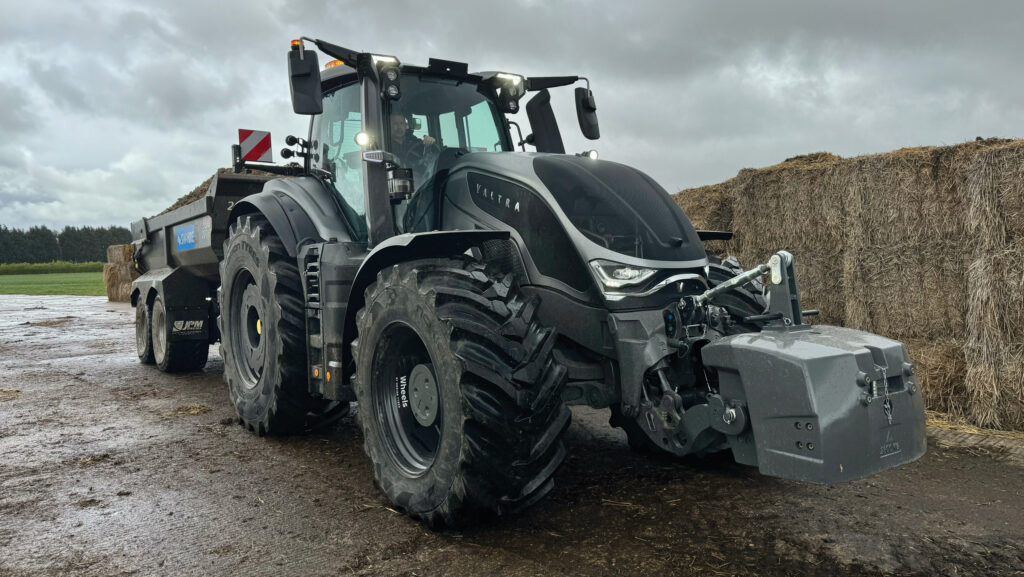 © MAG/Oliver Mark
© MAG/Oliver Mark Valtra’s big S-series has finally been given some Finnish affection, having been left as little more than a masquerading Massey for nigh on two decades.
As well as acquiring a bit more power and a much-improved cab, the identity crisis has been solved with Agco’s decision to revert production to Suolahti after a lengthy period of rustication on Massey Ferguson’s line in Beauvais, France.
Key to its return was a cash injection for the Nordic plant that yielded a new paint shop. This was previously an output-ravaging bottleneck, but it can now handle the S-series’ socking great chassis alongside the rest of the Valtra alphabet – As, Gs, Ns, Ts and Qs.
See also: First impressions: Valtra’s new Q305 tractor
Real estate dedicated to transmission assembly has also been expanded by more than 50%, allowing the job to be completed on home turf and saving the need to haul ML gearboxes from Fendt’s gaff at Marktoberdorf, Germany.
As well as allowing all the major components to be built in in-house, these improvements have apparently ramped up production capacity, improved quality and given Valtra more control over supply, which had been irritatingly lumpy.
However, keen observers will point out that these changes are all cosmetic and, underneath, it still runs on a platform shared with the 9S from Agco’s red arm.
Quite right they are, but the Valtra fit-out does bring its perks, not least the popular SmartTouch armrest, the option of swivel-seat TwinTrac reverse drive, and an inexhaustible list of custom extras offered by its Unlimited studio.
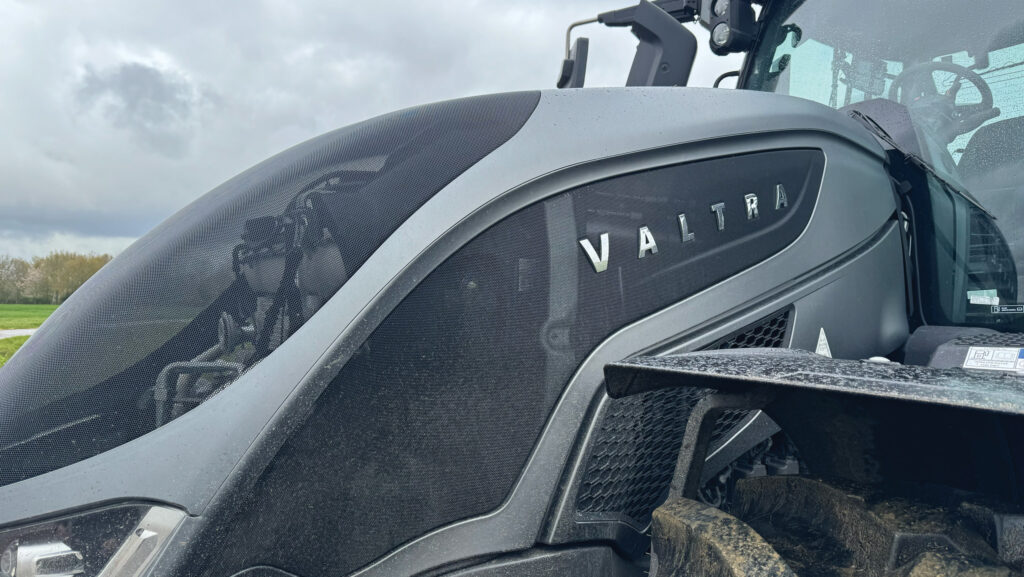
© MAG/Oliver Mark
More power
Beyond the change of provenance, the main headline is more power from the same 8.4-litre Agco Power block that has propelled S-series tractors since 2008.
An OAP (old age powertrain) it may be, but the engineers have beavered away to improve its performance, this time extracting an extra 10-15hp for each of the six models.
This fettling has also yielded torque dividends, with the biggest S416 now churning out its 1,750Nm maximum at a lowly 1,600rpm.
That’s a drop of several decibels and about 150rpm, making it easier on both drivers’ ears and owners’ wallets.
The difference this rev-saving, torque-gaining adjustment has made in the field has yet to be ascertained – a UK demonstrator won’t land until late summer – but on first impressions it seems as gutsy as ever.
Sadly, the engine bark is lost behind a wall of wind noise as huge volumes of air are hoovered into the intake system.
As for the range, the Finns’ flagship, the S416, gets 420hp on tap, while the rest rely on a boost function to ramp up output.
The second-from-top S396 gains an extra 20 on its 400hp maximum when under heavy hydraulic or pto load, or at transport speeds above 18kph, putting it on par with the biggie.
The quartet of models in the lower reaches get a 30hp injection to their outputs, which run from 280hp to 370hp.
These smaller models will seldom be seen; they’re too cumbersome relative to the power, so Valtra expects the vast majority of buyers to either go big or go for a Q305.
The engine itself, now hidden under a sleeker bonnet, has a decent reputation. Gremlins tended to stem from bunged-up NOx sensors and actuators in the emissions systems due to iffy, high-sulphur fuel – something that causes headaches irrespective of tractor brand.
But these may be partly alleviated by the decision to ditch exhaust gas recirculation in the new models, leaving a particulate filter, catalyst and SCR module to deal with nasties.
By no longer funnelling 10% of the hot, combusted air back through the intake manifold, the engineers have been able to scrap one of the two turbochargers.
The result is that the engine runs cooler and should drink slightly less.
The flipside is that it will require a tad more AdBlue.
Exactly how much depends on the task at hand – consumption increases as the engine is pushed harder – but it’s unlikely to be much more than a few percentage points.
As a result, owners shouldn’t expect any change in overall running costs.
Same transmission?
Yep. Fendt’s hand-me-down, the ML260 CVT, provides buyers with a true stepless box – unlike the four-range Direct hybrid of the smaller T-series.
However, the German firm has pulled rank in so far as it’s the only Agco brand offering a 60kph top speed; Valtra and Massey buyers must settle for a more modest – and closer to legal – 53kph (43kph versions are also available).
And while the Fendt 942 now runs a fancier single-range Variodrive system, Valtra gets the old two-range affair that requires drivers to stop when switching from field to road modes.
The former runs up to 26kph and the latter from 0 to 53kph, with the sweet spots coming midway in each. That works out neatly for cultivation work at 8-12kph.
However, this setup relies on operators remembering to select the correct range at the start of a job.
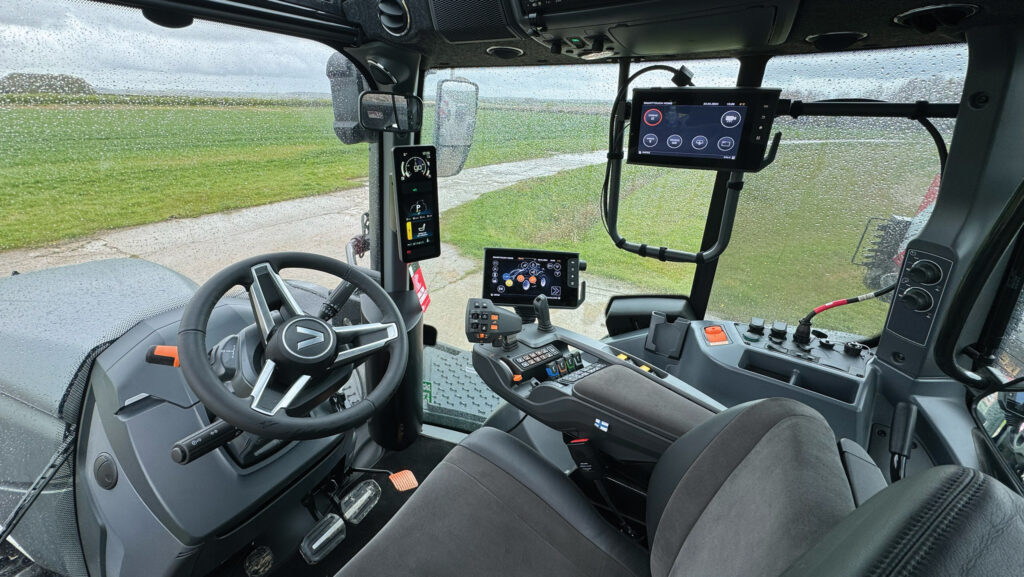
© MAG/Oliver Mark
Familiar cab
From Valtra’s perspective, the best part about taking production back in-house is that it can now fit its own cab, on which it spent many millions developing.
That means it’s out with the old Massey ensemble and in with the five-pillar setup that debuted on the T series in 2014 and was subsequently fitted to the Ns and Qs.
It’s easier to access, more spacious, and comes with smart monochrome interior décor. The only blemishes are some cheap, thin and occasionally flappy plastics that fail to hug pillar edges as cosily as they might.
But the neatly laid out controls are a far cry from the abomination of yesteryear, the dinner plate-sized steering wheel remains satisfyingly weighty, and the tablet-style SmartTouch monitor is as simple to use as anything on the market.
The fact that it’s relatively small – and crisp – is good in so much as it doesn’t clutter the workspace and inhibit visibility.
That tidiness goes out of the window if you’re running isobus implements, up to four cameras and guidance maps, though. Viewing the lot through one modestly sized screen is impossible, which means festooning the side bar with monitors.
A range of automation functions can simplify control further. These include Auto U-Pilot, which initiates a programmed headland management sequence without driver input, and SmartTurn, which completes the turning process – either a loop or a forward/reverse manoeuvre.
Handily, these can be specced individually, rather than as a complete package – something that stands it out from its fellow Agco brands.
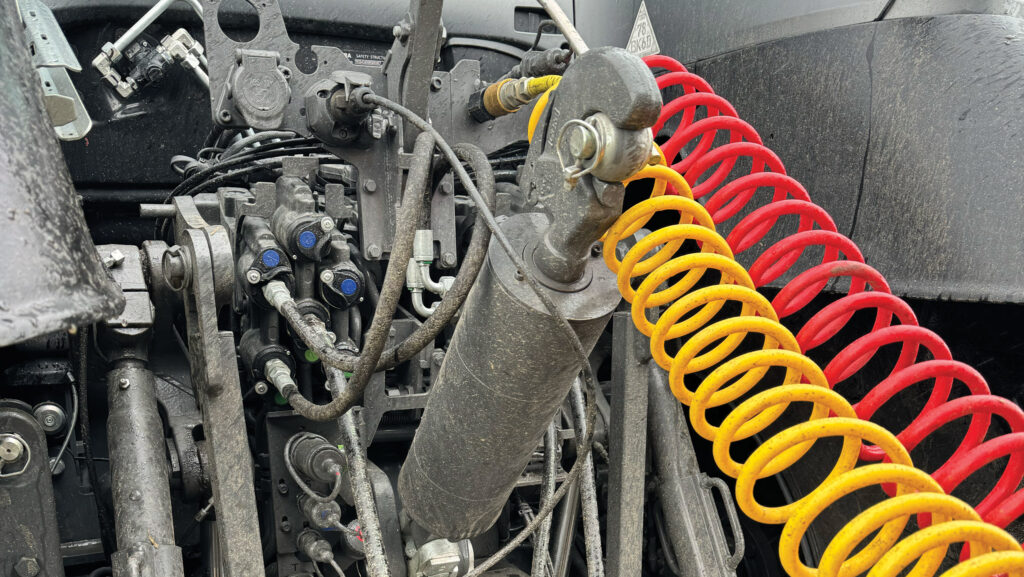
© MAG/Oliver Mark
More hydraulic power
Though the linkages have ample capacity – 5t front, 12t rear – the tractor’s 12t weight, plus a 2.3t front block and 700kg on each back wheel, takes it perilously close to the 16t payload limit without an implement fitted.
It’s not an issue exclusive to Valtra, but something operators and owners should be mindful of when hitting a public road.
There have been improvements in the hydraulic department, with standard models getting a load-sensing pump that will send up to 200 litres/min to the six spools, and an “eco” mode engaging an extra 80 litre/min gear pump. This provides the same maximum output at lower revs – 1,650rpm versus 1,950rpm.
There’s also the option of speccing a second 200-litre/min unit to double the capacity for oil-hungry drills and the like. This also adds a high-flow outlet.
Extra options
As mentioned, the move to Finland opens up a world of extras offered by the famed Unlimited studio.
Valtra reckons 40% of all tractors are funnelled through here. And that figure almost doubles for the high-horsepower models, as operators are keener to have a few creature comforts and their cost is small relative to that of the machine. Some have been known to spend upwards of £25k to get their precise requirements.
Buyers can, within reason, spec whatever they want, whether that’s an ear-splitting sound system, souped-up exterior or interior embellishments such as carpet, a picnic table or an extra display for Apple CarPlay.
Such has been the success of Unlimited that Massey now has its own rip-off version, the MF By You boutique workshop.
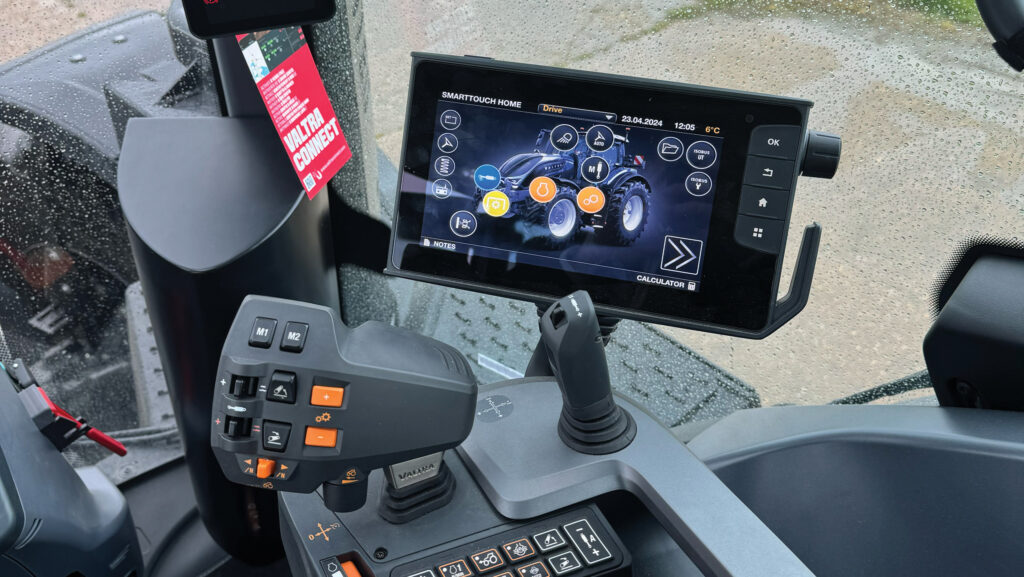
© MAG/Oliver Mark
Farmers Weekly verdict
Given it’s largely a re-clothing exercise, buyers should know exactly what they’re getting with the new S-series.
The engine is time-proven, the transmission well-respected, and the cab popular – and showing little sign of ageing – since its introduction a decade ago.
Whether this, and the small rise in power output, is enough to unseat John Deere in this power bracket is another matter.
There’s also the option of buying the red version. List price of Massey’s 9S.425 is some £45k lower than the S416, despite it having the same engine, transmission, chassis and axles – and an extra 5hp.
Likes and gripes
Likes
- Smart interior
- Easy touchscreen navigation
- Plenty of hydraulic power
Gripes
- Bellowing air intake drowns engine noise
- Static transmission range change
- Cab trim tacky in places
Valtra S416
Engine 8.4-litre, six cyl Agco Power
Max power/torque 420hp/1,750Nm
Transmission Two-range Agco CVT
Hydraulics 400 litres/min
Rear lift 12t
Weight 12t
Payload 16t
Base list price £333,028
The range |
||||||
|
|
S286 |
S316 |
S346 |
S376 |
S396 |
S416 |
|
Engine |
Six-cylinder, 8.4-litre Agco Power |
|||||
|
Transmission |
Two-range ML 260 CVT |
|||||
|
Max/boosted power (hp) |
280/310 |
310/340 |
340/370 |
370/400 |
400/420 |
420 |
|
Max/boosted torque (Nm) |
1,250/ 1,400 |
1,350/ 1,500 |
1,500/ 1,600 |
1,550/ 1,700 |
1,700/ 1,750 |
1,750 |
Valtra S416 rivals (list prices)
Case IH Magnum 340: 374/409hp, £326,585
Claas Axion 950: 410hp, £317,260
Fendt 942: 415hp, £372,613
John Deere 8R 370: 407/420hp, £386,256
Massey Ferguson 9S.425: 425hp, £297,950
New Holland T8.435: 415/435hp, £364,513

